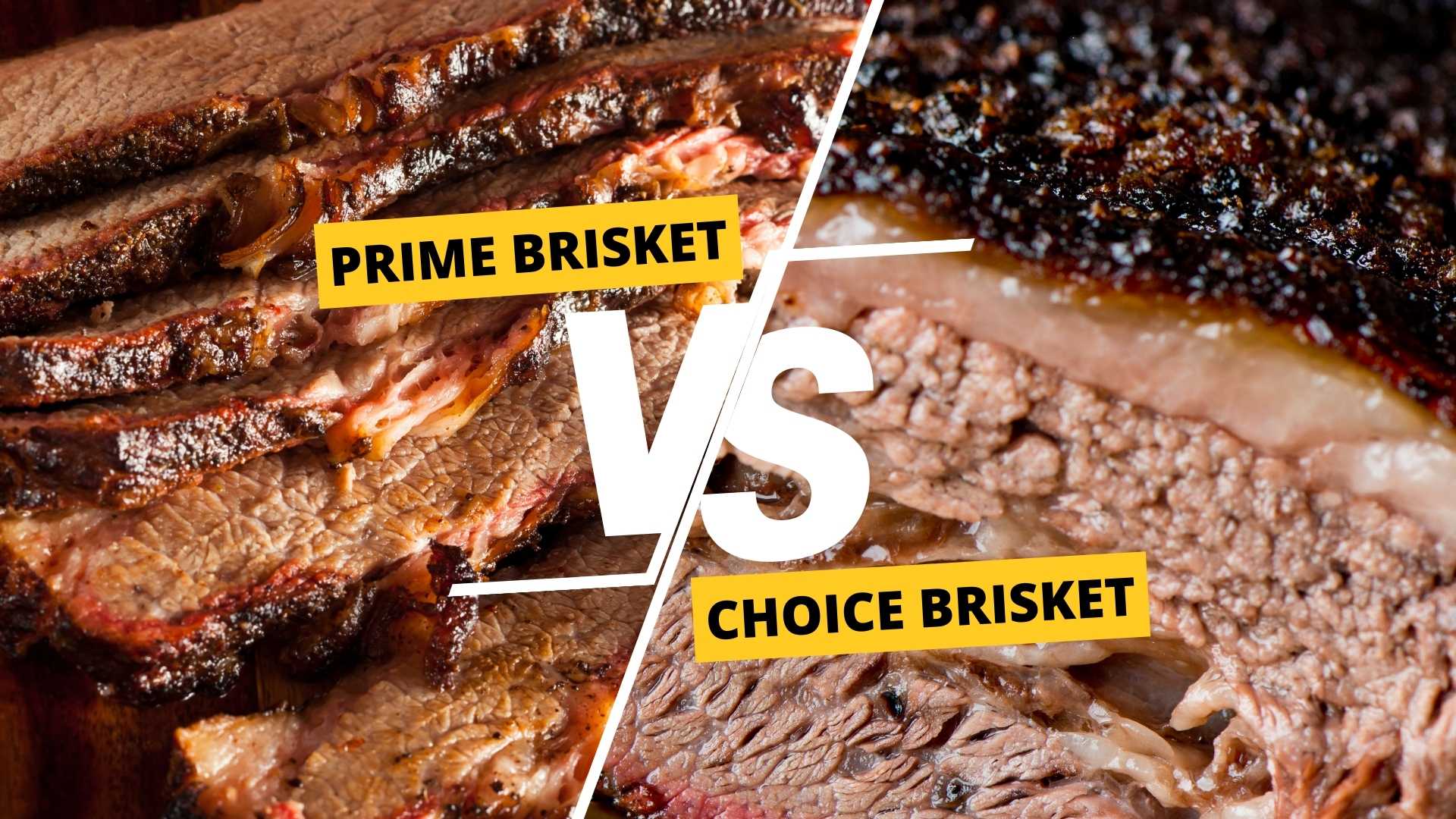Brisket is a beloved cut of meat for barbecue enthusiasts, known for its rich flavor, juicy texture, and potential for creating mouth-watering meals. One factor that can significantly impact the quality of your brisket is the grade of beef you choose. Prime and choice are two of the most common grades of beef available in the United States, and they differ in terms of marbling, tenderness, and other factors that can impact the final product.
In this article, we will explore the differences between prime and choice brisket, including the pros and cons of each grade, how to select the right brisket for your needs, and tips for cooking it to perfection.
Prime Brisket
Prime-grade beef is the highest quality beef available and is typically found in high-end restaurants or specialty butcher shops. It represents less than 5% of all beef produced in the United States and is graded by the USDA based on factors such as marbling, texture, and maturity. Prime brisket is prized for its high level of marbling, which adds flavor and juiciness to the meat. It is also typically more tender than other grades of brisket, making it a favorite among BBQ enthusiasts.
Pros:
- A high level of marbling adds flavor and juiciness to the meat
- More tender than other grades of brisket
- Typically used in high-end restaurants or specialty butcher shops
Cons:
- Higher cost than other grades of beef
- May be more difficult to find in certain regions or stores
- May not be necessary for all types of BBQ, depending on personal preference and cooking method
Choice Brisket
Choice-grade beef is the second-highest quality beef available and is more widely available than prime-grade beef. It represents about 50% of all beef produced in the United States and is also graded by the USDA based on factors such as marbling, texture, and maturity. Choice brisket is known for having a moderate level of marbling, which can still add flavor and juiciness to the meat but may not be as pronounced as in prime brisket. It is typically less expensive than prime brisket and is a popular choice among home cooks and BBQ enthusiasts.
Pros:
- More widely available than prime-grade beef
- Less expensive than prime brisket
- Can still add flavor and juiciness to the meat
Cons:
- May not be as tender as prime brisket
- A moderate level of marbling may not be enough for some BBQ enthusiasts
- Quality may vary depending on the source and supplier
Comparing Prime and Choice Brisket
When comparing prime and choice brisket, there are several factors to consider, including flavor, texture, and cooking time. Prime brisket is known for having a more intense beef flavor, with a high level of marbling contributing to a rich, buttery taste. It is also more tender than choice brisket, which can make it easier to cook to the desired level of doneness without becoming dry or tough. However, prime brisket may require less cooking time than choice brisket, as the high level of marbling can make it more susceptible to overcooking.
Choice brisket, on the other hand, has a milder beef flavor that may be more suitable for certain types of BBQ, such as those that incorporate a lot of rubs or sauces. It is also more forgiving than prime brisket when it comes to cooking time, as the moderate level of marbling can help it retain moisture even if it is slightly overcooked. However, choice brisket may require more cooking time than prime brisket, as it can take longer to break down the collagen and become tender.
In terms of texture, prime brisket is known for being more melt-in-your-mouth tender, thanks to the high level of marbling. It may also have a softer texture than choice brisket, which can have a firmer, chewier texture. However, this is a matter of personal preference, as some BBQ enthusiasts prefer a firmer texture that holds up well to slicing and shredding.
When it comes to cooking methods, both prime and choice brisket can be cooked in a variety of ways, including smoking, braising, or roasting. However, the choice of cooking method can impact the final product, depending on the grade of beef used. For example, prime brisket may be more suitable for smoking, as the high level of marbling can help it retain moisture during the long cooking process. Choice brisket may be better suited for braising, which involves cooking the meat in liquid to help break down the collagen and create a tender, juicy texture.
Real-World Examples
To get a sense of how different BBQ chefs and enthusiasts use prime and choice brisket, let’s take a look at a few examples.
Franklin Barbecue in Austin, Texas is widely considered to be one of the best BBQ joints in the country. They use prime brisket exclusively, which they source from a specific breed of cattle and age for 30 days before smoking it for up to 18 hours. This results in a brisket that is incredibly tender and packed with flavor, with a signature black crust that is a hallmark of Franklin’s style.
On the other hand, Aaron Franklin, the owner of Franklin Barbecue, has acknowledged that using prime brisket is not necessary for creating a great BBQ. In an interview with Bon Appétit, he said, “It’s not like prime brisket is the end-all-be-all. It’s just one of those things that, if you have the access and the funds, it can make a difference.”
At home, BBQ enthusiasts may have more limited access to prime brisket and may prefer to use choice brisket instead. In this case, it’s important to choose a high-quality cut of meat from a reputable supplier and to use cooking techniques that can help maximize the flavor and tenderness of the meat. This may involve using a flavorful rub or marinade, cooking the brisket low and slow over indirect heat, and allowing it to rest before slicing or shredding.
Conclusion
When it comes to choosing between prime and choice brisket, there is no one-size-fits-all answer. Both grades of beef can create delicious and satisfying BBQs, depending on personal preference and cooking method. However, it’s important to understand the differences between the two grades and to choose a cut of meat that aligns with your goals and budget. Whether you opt for prime or choice brisket, be sure to use high-quality ingredients, follow best practices for cooking and preparation, and enjoy the rich and satisfying flavors of this classic cut of meat.

